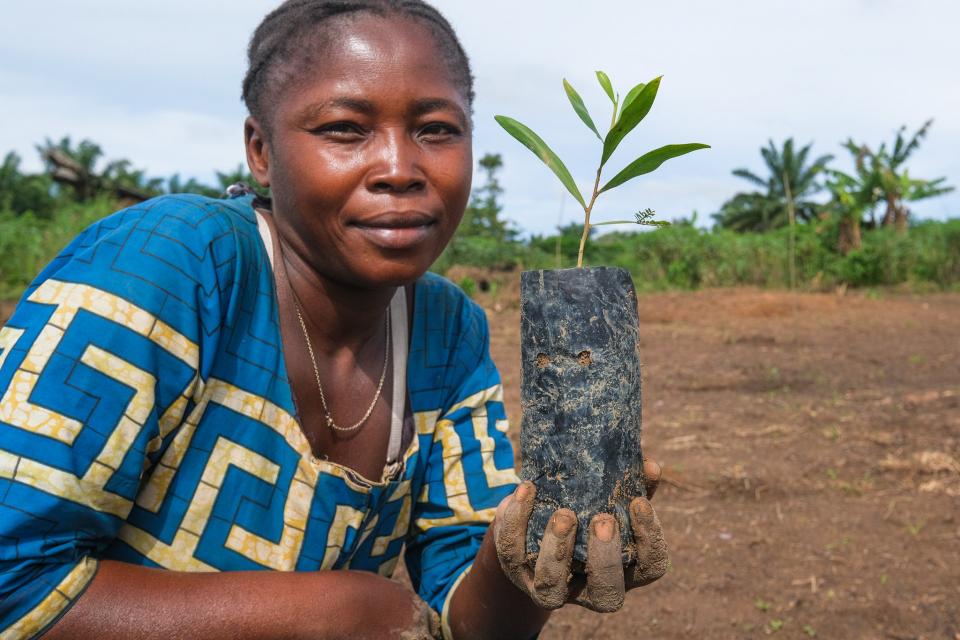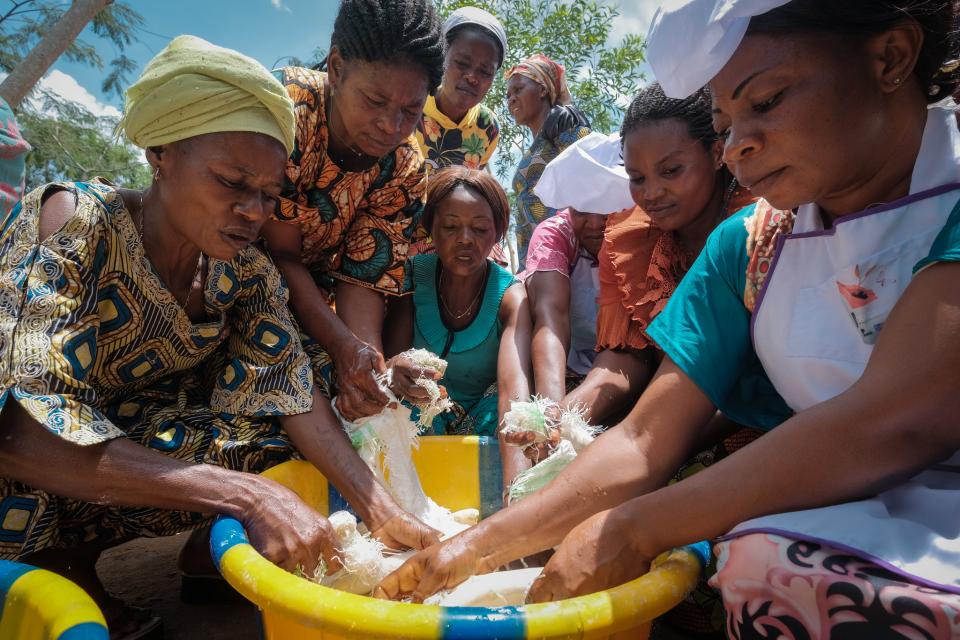Small-scale, multidimensional interventions work better to improve equal access to finance in agriculture
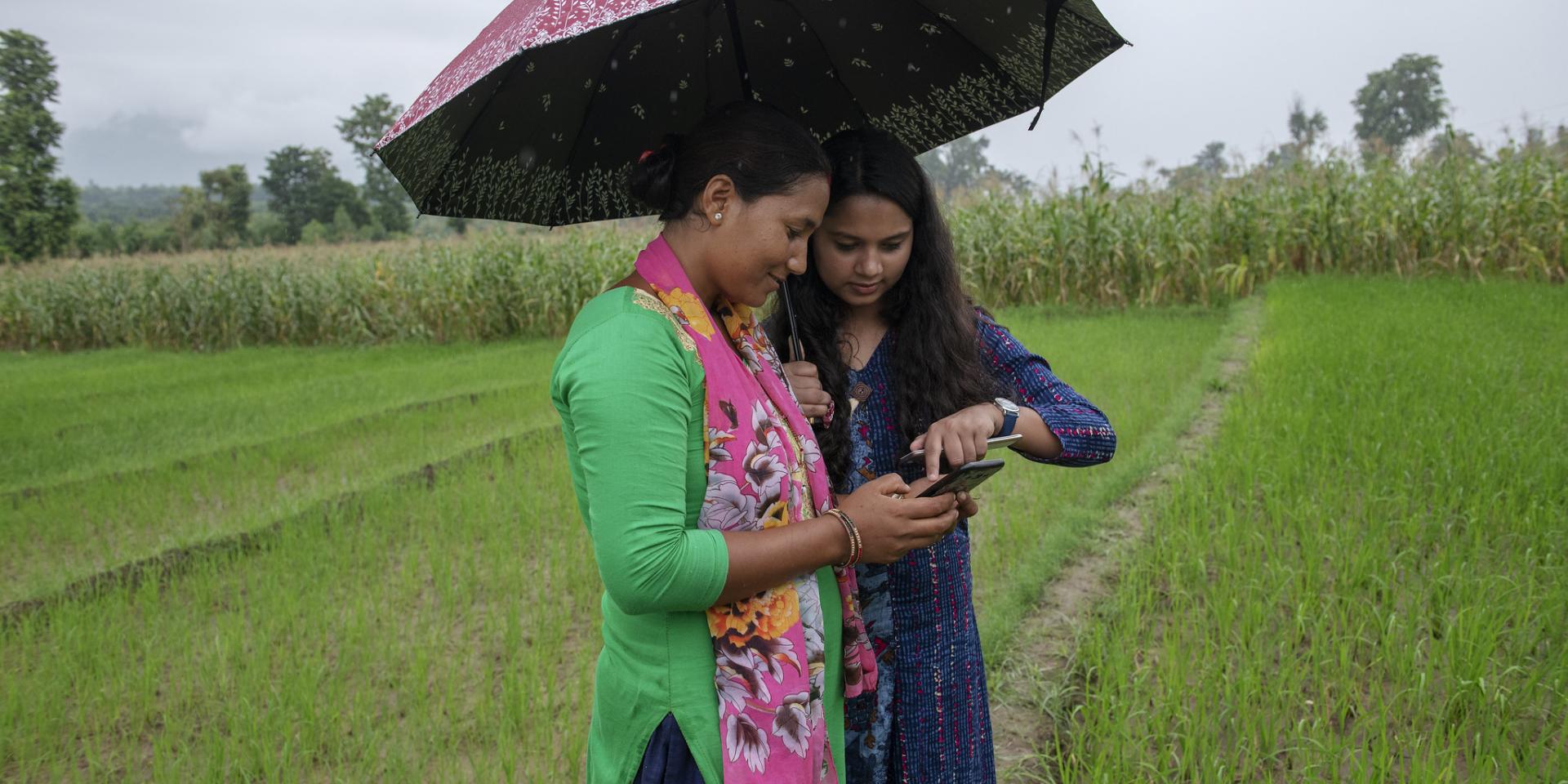 Photo by C. de Bode/CGIAR
Photo by C. de Bode/CGIAR
Key Messages
- Key contributing factors to the gender gap in access to finance include gendered sociocultural norms, limited ownership of and access to productive resources, and lack of financial products and services tailored to women’s needs.
- Evidence suggests that financial-inclusion interventions have a small, but significant and positive effect on women’s productivity in agriculture.
- Financial inclusion of women in agricultural systems can be assisted by interventions designed to: build capacity of women in financial and digital services; facilitate access to relevant financial products; create inclusive financial systems, groups and institutions; support women’s groups and enterprises in business development; and drive gender-sensitive financial policies.
- Women benefit more when interventions are multidimensional, designed for implementing at a smaller scale, and directed toward both men and women rather than women alone.
Gender norms make it difficult for women to make independent financial decisions
Globally, women form the backbone of agriculture and food systems. But unequal access to financial services and products such as savings, credit and insurance affect women’s capacity to access markets, technology and other agricultural inputs. It also curtails their ability to explore new economic opportunities, diminishes their bargaining power and self-esteem while increasing their vulnerability to risks.
This gender gap in financial inclusion limits women’s agricultural productivity, hindering their social and economic empowerment. The reason for this exclusion is primarily their limited ownership of and access to productive resources, heightened by gendered sociocultural norms, making it difficult for women to independently take advantage of financial-inclusion opportunities. For example, women may be reluctant to apply for credit due to a limited capacity to take financial risks by themselves. Instead, they often prefer organizations such as self-help groups that allow for joint decisions and shared risks.
Finding out which interventions advance financial inclusion
We undertook a systematic review (forthcoming) of available evidence to distil which interventions advance financial inclusion; and how financial inclusion affects productivity, advances gender equality and empowers women in agriculture and food systems.
Our review examined 39 studies—primarily impact evaluations analyzing financial-inclusion interventions in agri-food systems in low- and middle-income countries (LMICs) across Asia, Africa, Latin America, and the Middle East and North Africa.
These studies covered a range of interventions aimed at the financial inclusion of women by: improving the availability and ease of access to financial products such as microcredit and microsavings accounts; supporting inclusive formal and informal financial systems and institutions such as self-help groups and village savings and loan associations; and enabling financial policies, legislation and regulations that create a supportive environment for women. The studies also included interventions such as capacity-building programs in financial literacy and services, initiatives to help women’s groups and enterprises secure business development services, and other demand-side interventions intended to improve women’s ability to use financial services.
The effectiveness of interventions was assessed based on their effect on outcomes, which were selected based on the Women’s Empowerment in Agriculture Index (WEAI) framework: autonomy in decision-making on production, ownership of assets, control over financial resources, income use, leadership positions, political participation, workload, social and psychological effects.
Financial interventions improve productivity
Overall, the evidence suggests that financial-inclusion interventions have a positive impact on improving women’s productivity in agriculture. This finding is consistent with previous studies that have reported positive impacts of financial-inclusion interventions on women’s empowerment, increased income and increased decision-making power.
However, this impact is relatively small, meaning that financial interventions alone may not be sufficient to address the structural barriers that limit women’s access to resources and opportunities. Policies tackling broader socioeconomic and cultural factors that promote gender equality are equally critical.
Bundled interventions have a greater impact
Financial-inclusion interventions coupled or bundled with other interventions are more effective in improving the productivity and livelihood of rural women in agriculture, and play a significant role in promoting gender equality and empowering women. For instance, a study based in Niger found that a cash transfer program for women, coupled with psychosocial interventions, was effective in improving the lives of women.
Interventions have different impacts on women and men
Women benefited from the interventions we reviewed; however, men barely experienced a change in their agricultural productivity. Financial-inclusion interventions implemented at a smaller scale and targeting both women and men are more effective in enhancing livelihoods of women in agriculture.
This outcome highlights the need for a more gender-sensitive approach to introducing interventions that should take into account the differing needs and constraints of women and men accessing financial resources.
Gaps in the evidence
While the evidence supports the effectiveness of financial-inclusion interventions, we need more rigorous studies to better understand their effects on women in agri-food systems in LMICs. Studies focused on robust methodologies, including randomized controlled trials, are likely to provide stronger evidence of effective financial-inclusion interventions.
Currently, the evidence base is mostly from middle-income countries and geographically focuses primarily on sub-Saharan Africa and South Asia. Therefore, there is a need for more studies from a wider geographical region and other LMICs. There are few evaluations on the cost-effectiveness of financial-inclusion measures that target women—policymakers require this kind of information on program costs to allocate resources efficiently.
Policy recommendations
- Address the gender gap in agricultural systems through financial-inclusion interventions that prioritize easing women’s access to financial products and services, and put in place institutions, policies and regulations sensitive to women’s constraints to using and benefiting from such initiatives.
- Design and implement bundled programs at a small scale for a better impact on women’s productivity in agriculture. For instance, a multi-component program in Mongolia—The Inner Mongolia Autonomous Region Rural Advancement Programme successfully used a gendered lens to alleviate poverty by providing women with equal access to different farming technologies and also put in place support systems such as small-scale micro-credit and specific income-focused training for women.
References
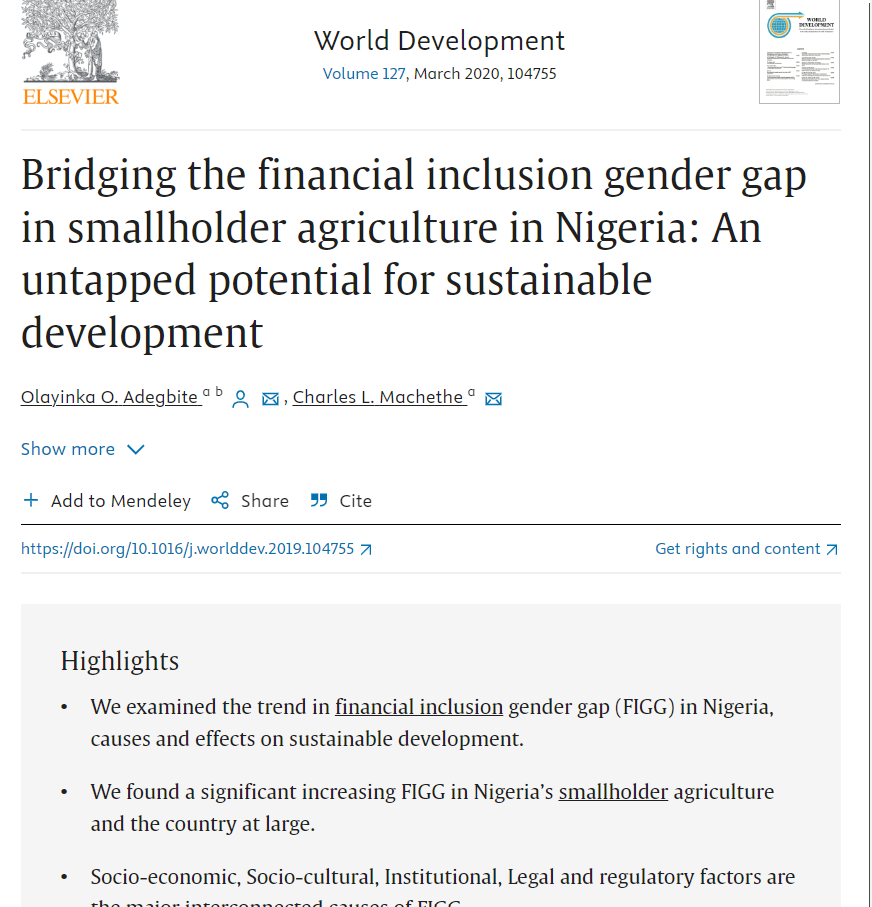
Bridging the financial inclusion gender gap in smallholder agriculture in Nigeria: An untapped potential for sustainable development
Adegbite, Olayinka O., and Charles Machethe. 2020. “Bridging the Financial Inclusion Gender Gap in Smallholder Agriculture in Nigeria: An Untapped Potential for Sustainable Development.” World Development 127 (C). https://econpapers.repec.org/article/eeewdevel/v_3a127_3ay_3a2020_3ai_3ac_3as0305750x19304048.htm.
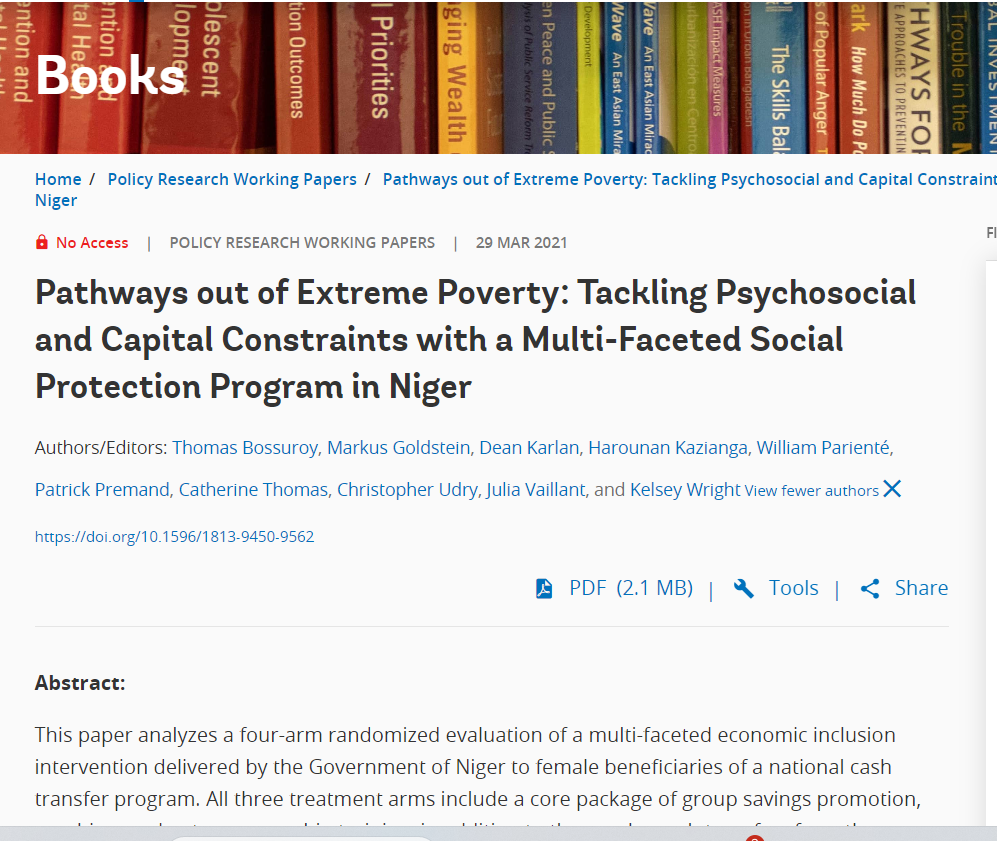
Pathways out of Extreme Poverty: Tackling Psychosocial and Capital Constraints with a Multi-Faceted Social Protection Program in Niger
Bossuroy, Thomas, Markus Goldstein, Dean Karlan, Harounan Kazianga, William Pariente, Patrick Premand, Catherine Thomas, Christopher Udry, Julia Vaillant, and Kelsey Wright. 2021. Pathways out of Extreme Poverty: Tackling Psychosocial and Capital Constraints with a Multi-Faceted Social Protection Program in Niger. https://doi.org/10.1596/1813-9450-9562.
From women's empowerment to food security: revisiting global discourses through a cross-country analysis
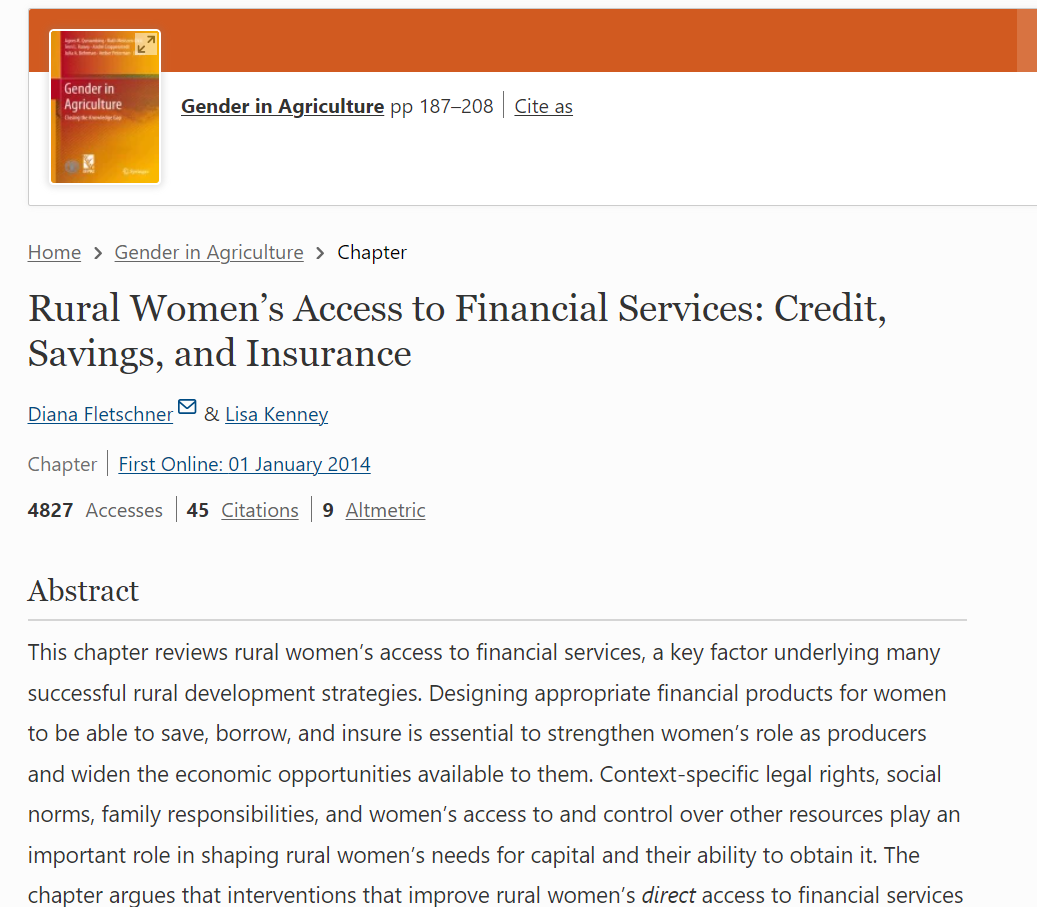
Rural Women’s Access to Financial Services: Credit, Savings, and Insurance
Fletschner, Diana, and Lisa Kenney. 2014. “Rural Women’s Access to Financial Services: Credit, Savings, and Insurance.” In Gender in Agriculture: Closing the Knowledge Gap, edited by Agnes R. Quisumbing, Ruth Meinzen-Dick, Terri L. Raney, André Croppenstedt, Julia A. Behrman, and Amber Peterman, 187–208. Dordrecht: Springer Netherlands. https://doi.org/10.1007/978-94-017-8616-4_8.

Does empowering women benefit poverty reduction? Evidence from a multi-component program in the Inner Mongolia Autonomous Region of China
Gu, Rui, and Fengying Nie. 2021. “Does Empowering Women Benefit Poverty Reduction? Evidence from a Multi-Component Program in the Inner Mongolia Autonomous Region of China.” Journal of Integrative Agriculture 20 (April): 1092–1106. https://doi.org/10.1016/S2095-3119(20)63436-0.
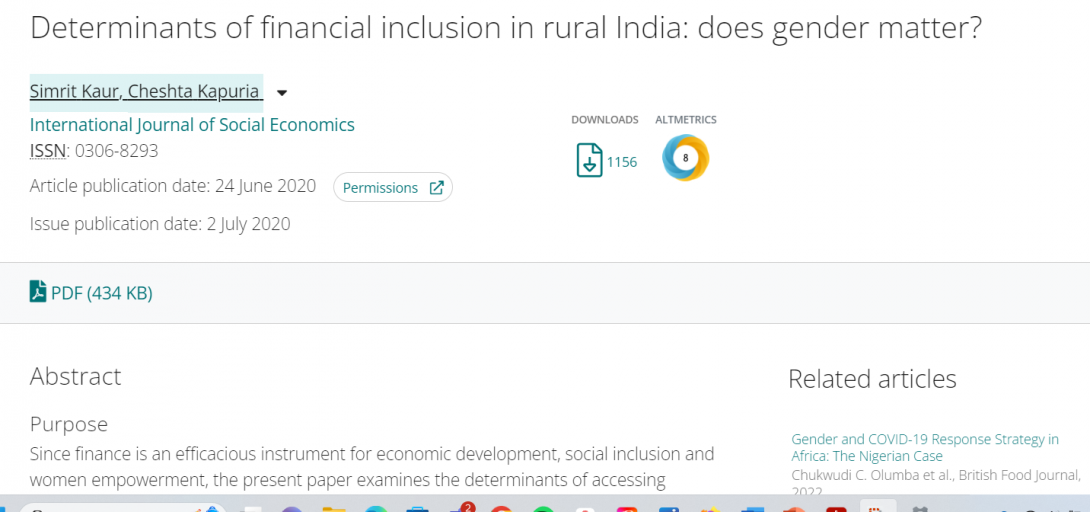
Determinants of financial inclusion in rural India: does gender matter?
Kaur, Simrit, and Cheshta Kapuria. 2020. “Determinants of Financial Inclusion in Rural India: Does Gender Matter?” International Journal of Social Economics 47 (6): 747–67. https://doi.org/10.1108/IJSE-07-2019-0439
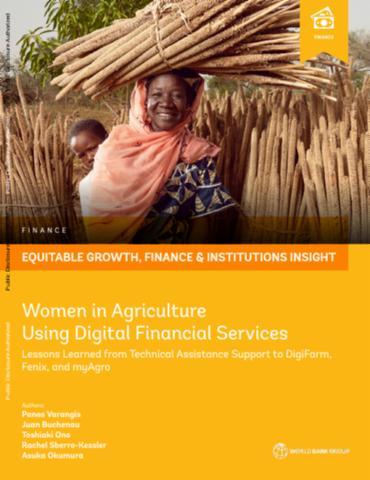
Women in Agriculture Using Digital Financial Services: Lessons Learned from Technical Assistance Support to DigiFarm, Fenix, and myAgro
Varangis, Panos, Buchenau, Juan, Ono, Toshiaki, Sberro-Kessler, Rachel, Okumura, Asuka. 2021. Women in Agriculture Using Digital Financial Services: Lessons Learned from Technical Assistance Support to DigiFarm, Fenix, and myAgro. Equitable Growth, Finance and Institutions Insight, World Bank, Washington, DC. http://hdl.handle.net/10986/35471.
